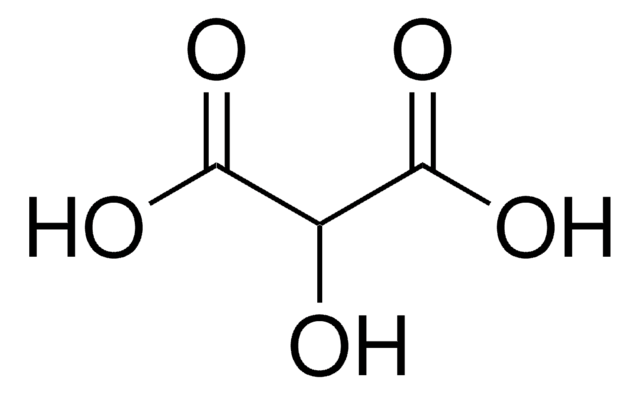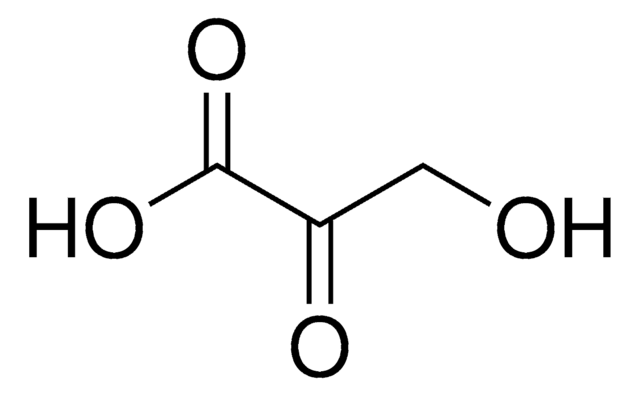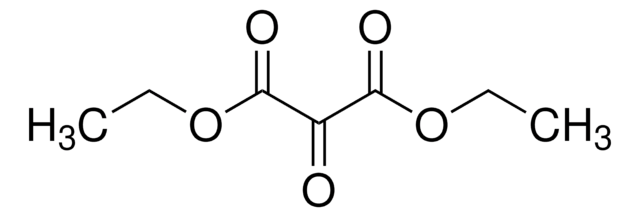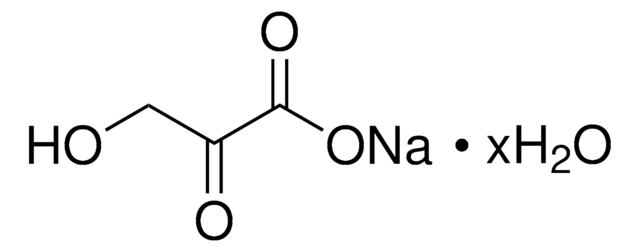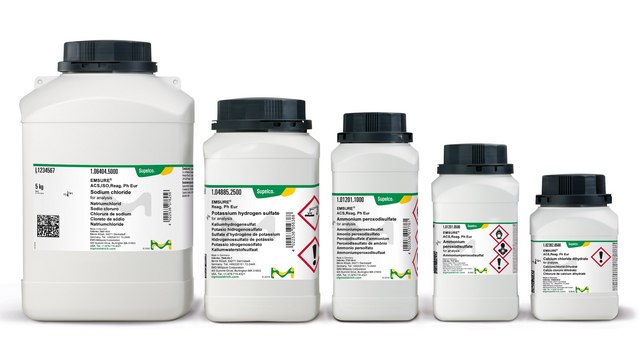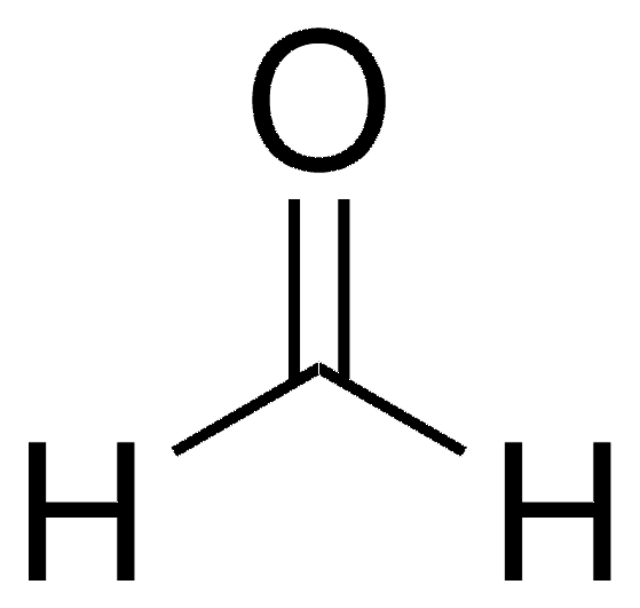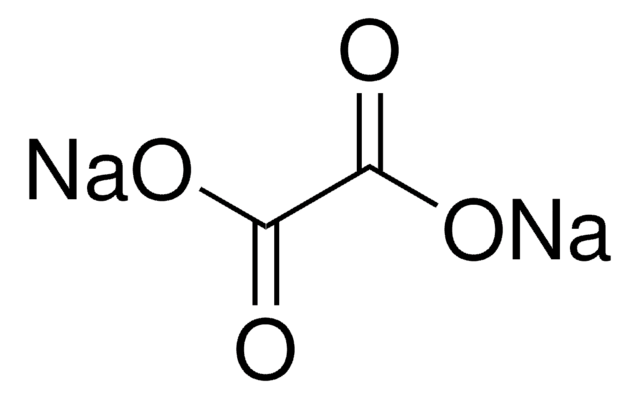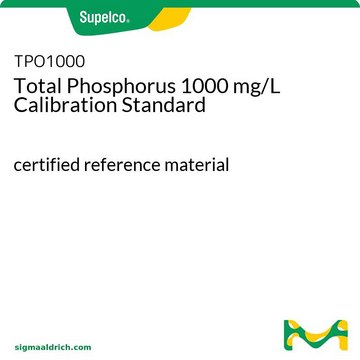71740
Sodium mesoxalate monohydrate
≥98.0% (RT)
Synonym(s):
Dihydroxymalonic acid disodium salt, Ketomalonic acid disodium salt, Mesoxalic acid disodium salt monohydrate
Sign Into View Organizational & Contract Pricing
All Photos(1)
About This Item
Linear Formula:
(HO)2C(COONa)2
CAS Number:
Molecular Weight:
180.02
Beilstein:
4924524
EC Number:
MDL number:
UNSPSC Code:
12352100
PubChem Substance ID:
NACRES:
NA.22
Recommended Products
Assay
≥98.0% (RT)
form
crystals
functional group
hydroxyl
SMILES string
[Na+].[Na+].OC(O)(C([O-])=O)C([O-])=O
InChI
1S/C3H4O6.2Na/c4-1(5)3(8,9)2(6)7;;/h8-9H,(H,4,5)(H,6,7);;/q;2*+1/p-2
InChI key
HMBGDJCPFGQLIO-UHFFFAOYSA-L
Looking for similar products? Visit Product Comparison Guide
Storage Class Code
11 - Combustible Solids
WGK
WGK 3
Flash Point(F)
Not applicable
Flash Point(C)
Not applicable
Personal Protective Equipment
dust mask type N95 (US), Eyeshields, Gloves
Choose from one of the most recent versions:
Already Own This Product?
Find documentation for the products that you have recently purchased in the Document Library.
Wanderson Sirley Reis Teixeira et al.
Talanta, 178, 1040-1045 (2017-11-16)
Methods for determination of glycerol and its electrooxidation products (neutral diols and carboxylates) by capillary electrophoresis (CE) with dual capacitively coupled contactless conductivity detectors (C
Wen-Yu Hsiao et al.
Cell reports, 33(1), 108223-108223 (2020-10-08)
Overweight and obesity are associated with type 2 diabetes, non-alcoholic fatty liver disease, cardiovascular disease and cancer, but all fat is not equal, as storing excess lipid in subcutaneous white adipose tissue (SWAT) is more metabolically favorable than in visceral
Justyna M Kowal et al.
Stem cells translational medicine, 9(2), 189-202 (2019-11-24)
Cultured human bone marrow stromal (mesenchymal) stem cells (hBM-MSCs) are heterogenous cell populations exhibiting variable biological properties. Quantitative high-content imaging technology allows identification of morphological markers at a single cell resolution that are determinant for cellular functions. We determined the
Sung Ho Lee et al.
Biochemical and biophysical research communications, 534, 864-870 (2020-11-11)
Bile acids have recently emerged as key metabolic hormones with beneficial impacts in multiple metabolic diseases. We previously discovered that hepatic bile acid overload distally modulates glucose and fatty acid metabolism in adipose tissues to exert anti-obesity effects. However, the
Haopeng Xiao et al.
Cell, 180(5), 968-983 (2020-02-29)
Mammalian tissues engage in specialized physiology that is regulated through reversible modification of protein cysteine residues by reactive oxygen species (ROS). ROS regulate a myriad of biological processes, but the protein targets of ROS modification that drive tissue-specific physiology in vivo
Our team of scientists has experience in all areas of research including Life Science, Material Science, Chemical Synthesis, Chromatography, Analytical and many others.
Contact Technical Service